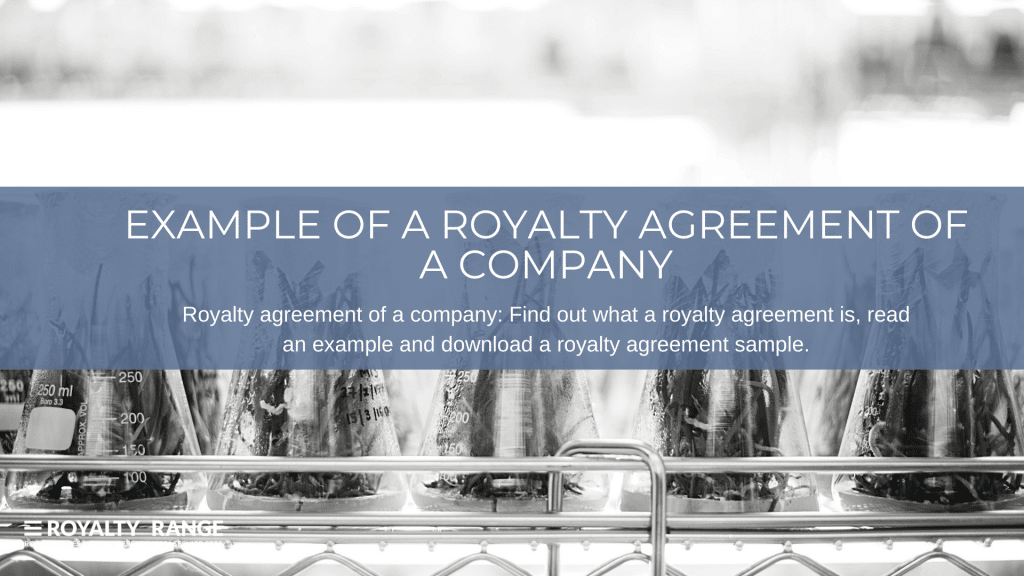Example of a royalty agreement of a company

Kris (Kestutis) Rudzika |
May 11, 2020

If you’re thinking of licensing your intellectual property or becoming a licensee, you need to be familiar with royalty agreements. The royalty agreement of a company is a central part of any licensing deal and makes sure that both parties are compensated fairly for their contributions. In this article, we will explain what a royalty agreement is and give you an example of when it might be used. At the bottom of this page, you can download a sample royalty agreement so that you can see a real-world example of what’s included in a royalty agreement and how it’s laid out.
What is a royalty agreement?
A royalty agreement of a company is a legal contract between a licensor and a licensee. It grants the licensee the rights to use the licensor’s intellectual property, under specific terms, in exchange for royalty payments. Typically, a royalty agreement is used when an inventor wants to license their intellectual property rights so that another party can manufacture and sell their invention.
Both parties must agree on an appropriate royalty rate – a payment that the licensee will make to the licensor on a regular basis. This is usually set as a percentage of gross or net sales, which is beneficial for both parties as it means that payments are proportional to the level of revenue generated by the licensed intellectual property. The licensee will pay the royalty agreement percentage to the licensor quarterly, annually or however regularly both parties decide is fair.
The royalty agreement includes information such as:
- The parties to the agreement
- The rights being granted
- The period of time during which the licensee can use the intellectual property
- The geographical scope the license applies to
- The type of payment required (e.g. a lump-sum payment and royalties)
- The royalty rate (usually a percentage)
- The royalty base (e.g. net or gross revenue)
- Any additional fees
For more information on what the agreement includes, see our blog on royalty agreements.
An example of when a royalty agreement is used
Here’s a made-up example of a situation involving a royalty agreement:
PhoneMe is a well-known phone brand that manufactures and sells high-tech mobile phones. It has a lot of intellectual property, including its trademark, trade name and intangible brand assets. PhoneMe wants to start offering its customers branded headphones to use exclusively with its product range, but it doesn’t have the manufacturing capabilities to develop the headphones itself.
As such, it decides to enter into an agreement with HeadSoundz – a manufacturer that specializes in making and selling audio equipment. In order to do this, PhoneMe needs to license the rights to its trademark, trade name and brand to HeadSoundz, so that HeadSoundz can use PhoneMe’s distinctive branding on the headphones, packaging and marketing. The two parties enter into a licensing deal. They both sign a royalty agreement that confirms HeadSoundz will pay PhoneMe a royalty rate of 5% of net sales on a quarterly basis, in exchange for the use of PhoneMe’s trademark, trade name and brand, for a duration of 3 years.
Download a sample royalty agreement here
If you’re entering into a licensing deal, it’s always helpful to see a sample royalty agreement of a company so that you know what to expect. Or, if you’re drafting a royalty agreement for a client or your own organization, it’s useful to have a royalty agreement sample to use as a starting guide.
Use the form below to download a sample royalty agreement from the RoyaltyRange database.
Request One Search
We will perform the search and deliver the initial results within hours, at no cost.




